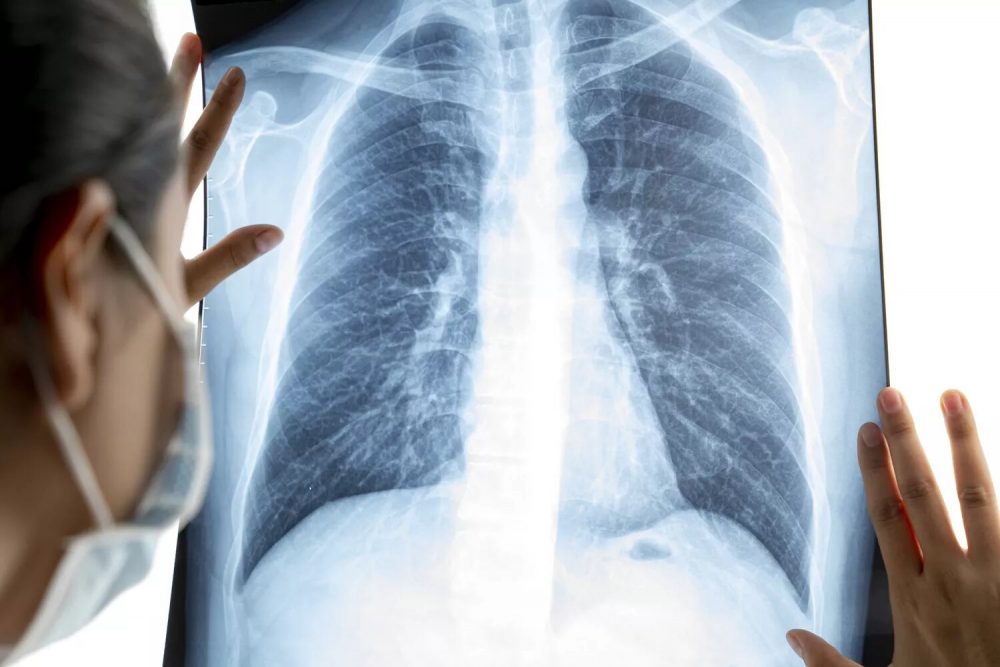Chest Infection
A chest infection is an infection that affects the lower respiratory tract, including bronchitis, pneumonia, and tuberculosis.

A chest infection is an infection that affects the lower respiratory tract, including bronchitis, pneumonia, and tuberculosis. Often, chest infections are self-limiting and don’t require medical treatment. However, it’s possible for an infection to become severe.
Types of Chest Infections
The most common types of chest infections include pneumonia and bronchitis. While tuberculosis is common worldwide, it’s not as common in the United States.
Bronchitis
Bronchitis is inflammation of the bronchi, the tubular structures that bring air in and out of the lungs. There are two main types of bronchitis: acute (short term) and chronic (persisting or constantly recurring).
Risk factors include:1
- Having a cold or other viral respiratory tract infection
- Chronic sinus infections
- Allergies
- Enlarged tonsils
Most people who develop acute bronchitis don’t need medical intervention. However, people with certain conditions like existing heart or lung diseases should talk to a doctor if they think they have or might develop bronchitis.1
Pneumonia
In some people, bronchitis can develop into a more serious infection called pneumonia, which is an infection of one or both of the lungs. People at higher risk of getting pneumonia include:2
- Older adults
- Infants under 24 months
- Smokers
- People with underlying medical conditions
Chest Infection Symptoms
Here are some of the symptoms of certain chest infections.
Bronchitis
Symptoms of acute bronchitis may include:
- Body aches
- Coughing that starts off dry then eventually produces mucus
- Mild fever and chills
- Fatigue
- Runny nose
- Breathing issues
- Sore throat1
Pneumonia
Symptoms of pneumonia include:
- Blue tinge to the lips and fingernail beds
- Confusion
- Coughing that produces mucus
- Fever and chills
- Extreme fatigue
- Rapid heartbeat
- Loss of appetite
- Chest pain when breathing in or coughing
- Breathing issues
Symptoms may vary depending on the individual and the type of pneumonia they have.2
Mycoplasma pneumonia, or walking pneumonia, is the mildest form of this type of infection. It often presents similarly to the common cold.3
Tuberculosis (TB)
This airborne bacterial infection mainly affects the lower respiratory tract. Symptoms of tuberculosis include:
- Chronic cough that lasts longer than three weeks
- Fever and chills
- Loss of appetite
- Weight loss
- Night sweats
Some people may also cough up blood.4
Causes
Acute bronchitis is usually the result of a virus, but it can be bacterial in origin. Irritants also can cause acute bronchitis.1 Pneumonia has many different potential causes. Bacteria, viruses, and fungi may all cause pneumonia.2 TB is a bacterial infection caused by a specific bacterium called Mycobacterium tuberculosis.4
Diagnosis
Doctors will perform a physical exam and take a medical history to diagnose bronchitis. Your doctor may order a chest X-ray to check for pneumonia. A sputum culture can help determine whether the infection is bacterial or viral.1
If your doctor suspects you have pneumonia, you may be asked to get a computed tomography (CT) scan of your chest, a bronchoscopy (a procedure to look directly into your lungs and air passages), and blood tests.2
If TB is a possibility, tests to confirm the diagnosis include:
- Skin tests
- Blood tests
- Chest X-ray or CT scan
- Sputum culture
Some of these tests can take weeks to produce results.4
Treatment
Most chest infections, including bronchitis, don’t produce complications. If bronchitis occurs because of a virus, antibiotics won’t help fight the infection.
Doctors may use antibiotics to treat a bacterial infection that has developed into pneumonia. Viral pneumonia typically clears up on its own in an otherwise healthy person.
At-home treatment strategies to manage symptoms include:
- Taking over-the-counter (OTC) cough medicine
- Using a humidifier
- Hydrating to thin out mucus1
- Getting lots of rest5
Pneumonia is also treated with similar strategies, but depending on the cause, the severity of the case, and your underlying health, it may need to be treated with prescription drugs or even hospitalization and breathing support. Antibiotics may be prescribed for bacterial pneumonia, antiviral medications for influenza, and antifungal medications for pneumonia caused by fungal infections.
Treatment for TB depends on whether the infection is active or latent. In people infected with TB but with no active infection, the treatment is preventative and involves taking an antibiotic called isoniazid for up to nine months.
If the infection is active, treatment involves taking antibacterial medications for up to a year. It’s crucial to take the whole course of medication to prevent treatment-resistant TB.4

